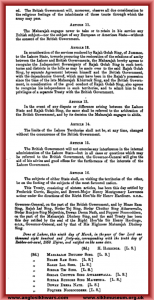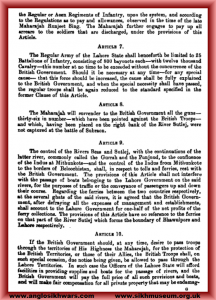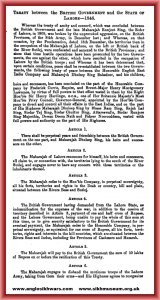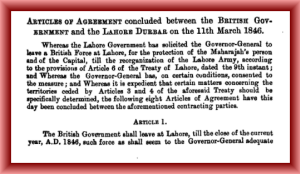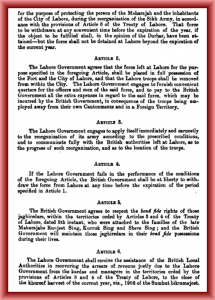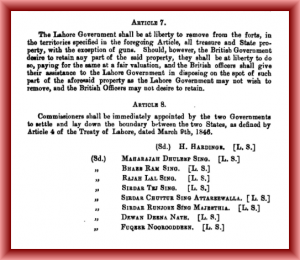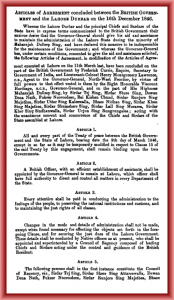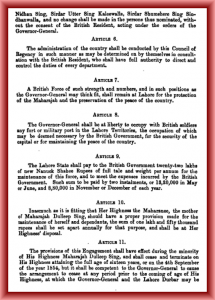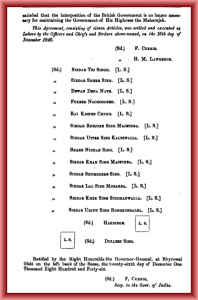The Anglo Sikh treaties of 1846
The ending of the first Anglo Sikh War resulted in the Treaty of Lahore (9th March 1846), Sikhs were made to surrender the valuable region (the Jullundur Doab) between the Beas River and Sutlej River. The Lahore Durbar was also required to pay an indemnity of 15 million rupees. Because it could not readily raise this sum, it ceded Kashmir, Hazarah and all the forts, territories, rights and interests in the hill countries situated between the Rivers Beas and Indus to the East India Company.
On 11th March 1846 a supplementary treaty was initiated.
With the role or rather non role played by Gulab Singh he negotiated the Treaty of Amritsar on 16th March 1846 acquiring many areas of the Punjab.
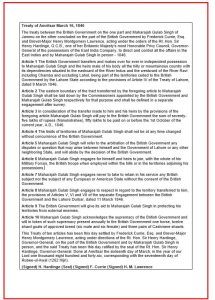
The supplementary Articles of Agreement of 1846 had specified that the British troops would remain in Lahore until no later than the end of 1846. When the time approached for the British to leave, the Durbar requested that the troops should remain until the Maharaja attained the age of 16. The British consented to this and new articles of agreement were drawn up, forming the Treaty of Bhyroval. This was signed on 26 December 1846, by Currie, Lawrence and 13 members of the Durbar and later ratified by Hardinge and the young Maharaja.
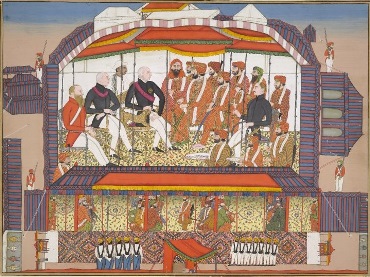
The signing of the Treaty of Bhairowal, 1846.
© The Trustees of the British Museum
A key condition of the British agreement was that a Resident British officer, with an efficient establishment of assistants, was to be appointed by the Governor-General to remain at Lahore, with “full authority to direct and control all matters in every Department of the State”.
The Regent, Maharani Jindan Kaur, mother of the Maharaja, was awarded an annual pension of 150,000 rupees and replaced by a Council of Regency composed of leading Chiefs and Sirdars acting under the control and guidance of the British Resident.This effectively gave the British control of the Government.

